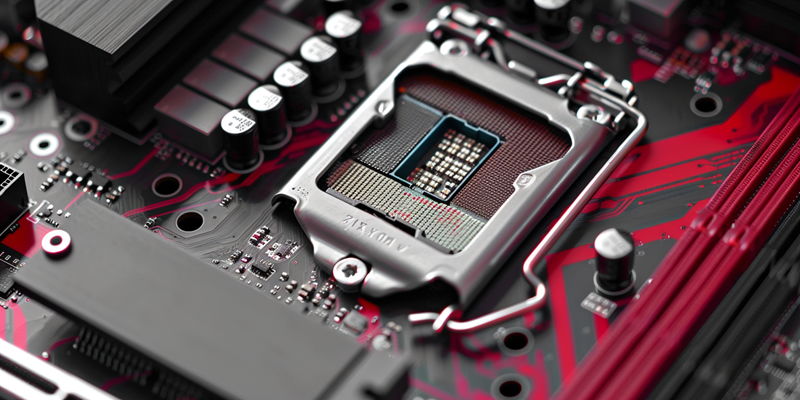The server CPU market is poised for a transformation as Intel prepares to launch its Xeon 6900 series, including the 6900P “Granite Rapids” and 6900E “Sierra Forest.” These next-generation processors are expected to deliver massive performance boosts in compute-intensive sectors and introduce a paradigm shift in server capabilities. With planned releases spanning from the third quarter of 2024 through the first quarter of 2025, the 6900 series is slated to set new benchmarks for core counts, with Granite Rapids offering up to 128 P-Cores and Sierra Forest up to an impressive 288 E-Cores. The differentiation between the P-Cores, designed for high-performance scenarios, and the E-Cores, optimized for efficient multi-threading, is indicative of Intel’s vision for a highly adaptable server ecosystem. This strategic segmentation signals a bold and clear commitment by Intel to lead in this space, catering to varying market needs from artificial intelligence and high-performance computing to database analytics and multi-core server deployments.
The Advent of P-Cores and E-Cores in Data Centers
Intel’s introduction of the 6900P and 6900E CPUs heralds a new era of data center performance with its P-Core and E-Core technologies. The distinction between these two core types is a strategic move by Intel, highlighting the company’s commitment to adaptability within server performance. The P-Cores, or performance cores, are engineered to tackle the most demanding computing tasks, making them ideal for sectors that rely heavily on AI, database analytics, and high-performance computing. Conversely, the E-Cores, or efficiency cores, are designed to excel in scenarios requiring efficient multi-threading and consistent performance over extended periods, meeting the needs of high-density multi-core server environments.
Chiplet Design: A New Standard for Scalability
Intel’s shift to chiplet-based architecture with the Xeon 6900 series represents a significant advancement in scalability and performance. The Granite Rapids and Sierra Forest CPUs will utilize multiple compute and I/O tiles, enabling higher core densities and improved connectivity. This modular approach is not only innovative in increasing core count but is also supported by Intel’s Embedded Multi-die Interconnect Bridge (EMIB) technology. EMIB enhances high-speed communication among the dies, providing an overall boost to CPU power. The potential this design holds for increasing throughput and processing ability in data center environments is substantial, positioning these CPUs to establish new industry standards.
Architectural Evolution and Granular Performance
Examining the technology of the Xeon 6900 series more closely, the Granite Rapids processors will feature the Redwood Cove core architecture. Designed for exceptional performance, the P-Cores in these CPUs will support hyper-threading and come equipped with 2 MB of L2 cache per core. They will also include modern instruction sets such as AVX-512 and Intel’s Advanced Matrix Extensions (AMX), demonstrating their capabilities in AI and vector operation tasks. In contrast, the Sierra Forest E-Cores, based on the Crestmont architecture, will prioritize efficiency and single-threaded performance, alongside robust AVX2 support and enhanced encryption capabilities. This architectural diversity ensures that the Xeon 6900 series can meet demands for both high performance and energy-efficient throughput.
Future-Proof Platforms and Connectivity
Intel’s forward-thinking extends beyond new core technologies; the company is also developing robust support infrastructure. The new server CPUs will be compatible with platforms such as the LGA 4710 and LGA 7529, designed to accommodate a wide range of server configurations from single to octa-socket setups. These platforms are future-proofed with cutting-edge PCIe Gen 5.0 and CXL 2.0 lane support, as well as compatibility with advanced DDR5 memory, ensuring that Intel’s server ecosystem remains at the forefront of technology. Such comprehensive support indicates Intel’s commitment not just to enhancing CPU capability but to creating a harmonious and powerful server environment adaptable to future technological advancements.
Competitive Landscape and Market Expectations
With ambitious benchmarks, Intel signals significant performance gains over its previous 5th Gen Xeon family. In a direct challenge to AMD’s EPYC lineup, Intel’s upcoming 6900 series is expected to offer competitive core counts. This escalation in the core count war prepares for a fiercely competitive market. If Intel’s projections prove accurate, we might see a reshuffling of the server CPU market hierarchy, with Intel making a concerted effort to reclaim lost ground and set a new standard in powerful, efficient server computing.
Strategic Segmentation for Diverse Workloads
The debut of the Xeon 6900 series signifies a game-changing move for Intel, ushering in chiplet-based designs that provide greater scalability and improved performance. The standout members of this lineup, the Granite Rapids and Sierra Forest CPUs, aim to increase core densities and connectivity options through multiple compute and I/O tiles.
What distinguishes Intel’s approach is the strategic implementation of their Embedded Multi-die Interconnect Bridge (EMIB) technology. EMIB facilitates rapid information exchange among the dies, enhancing the processors’ overall capabilities. High-speed interconnectivity suggests that data centers can expect a marked increase in throughput and processing power.
Intel’s groundbreaking modular methodology offers more than a significant rise in core count. It exemplifies Intel’s dedication to pushing boundaries and potentially redefining industry standards. By leveraging chiplet architectures and EMIB technology, the Intel Xeon 6900 series is set to chart a new course in the evolution of CPUs, particularly in data center environments where extensive processing power and efficiency are critical.

